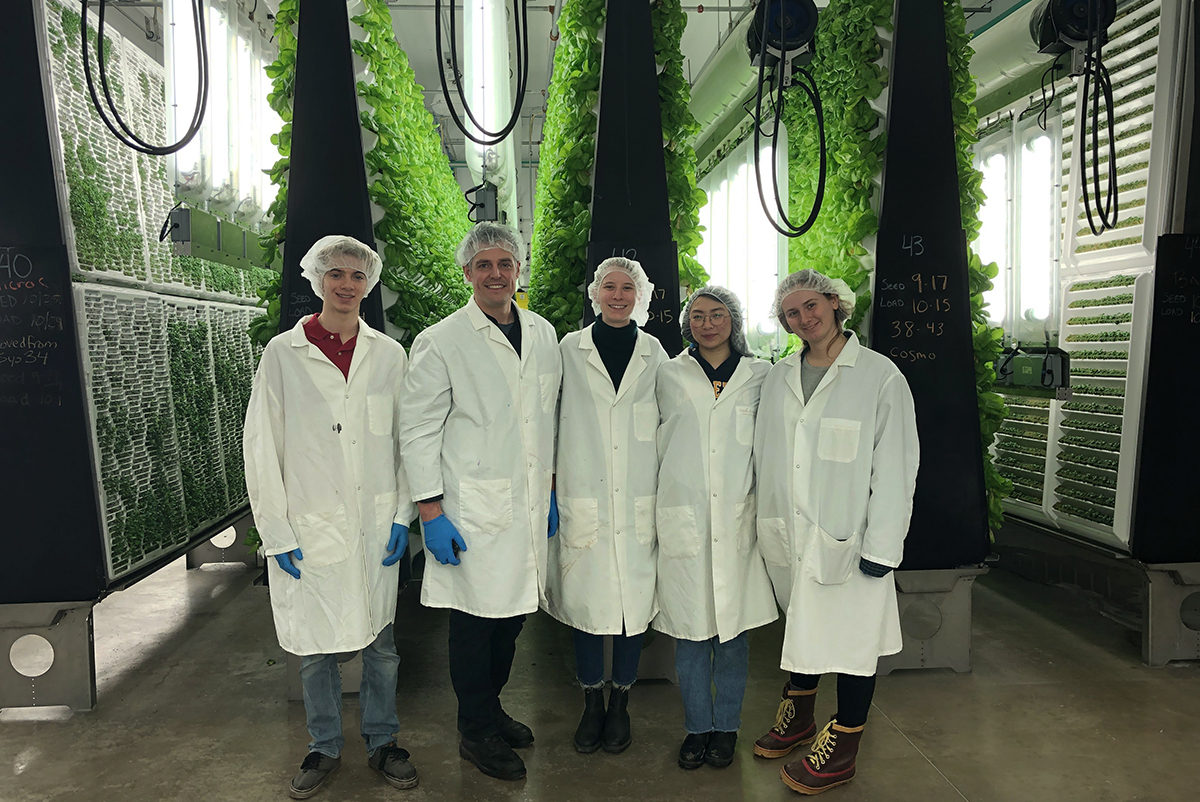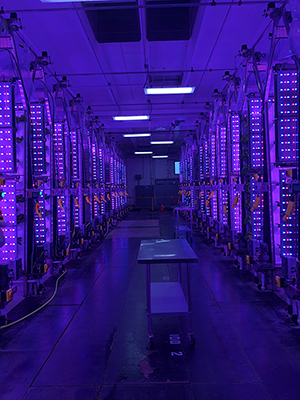Carleton Glimpses the Future at Living Greens Farm
- by Lily Gross

Carleton Executive Chef Charlie Schwandt (second from left) and Fellow Lily Gross (center) joined three Carleton students for the tour
Most Farm to Fork field trips are literally visits to wide open fields.
But the one that Executive Chef Charlie Schwandt, three Carleton College students, and Fellow Lily Gross recently took to Living Greens Farm, a Farm to Fork partner in Faribault, MN, was quite different.

Using only red and blue lights saves energy and increases efficiency across the operation
Living Greens uses air-grown technology that makes year-round planting possible even in Minnesota. Attendees had to first gear up, donning lab coats, hairnets, and gloves to prevent contamination. Living Greens Vice President of Business Development Nate Klingler led the tour, sharing background on the organization and their growing systems. Apparently founder Dana Anderson was inspired by a NASA study that sought methods for growing plants in space, which he translated into an advanced system that could produce crops even in the harsh winter climate.
The 40,000-square-foot facility is a modern marvel, with row after row of leafy greens illuminated by multicolored lights. Most of what they grow doesn’t need the full spectrum of light delivered through white light, so to increase efficiency, they use primarily red and blue lights. The watering system delivers a special formula of water and essential nutrients to the roots of each plant, and simulated wind strengthens the plants and helps them develop the same texture and characteristics of farm-grown plants.
The starter system is also unique to Living Greens. Traditionally, sprouts germinate in soil — theirs are grown in ground-up lava rock, and receive the same energy-saving lighting as their other plants. These high-tech elements yield a germination rate of 99.8%!
The future of local farming looked bright as attendees reflected on their visit and the impact of such forward-thinking operations.